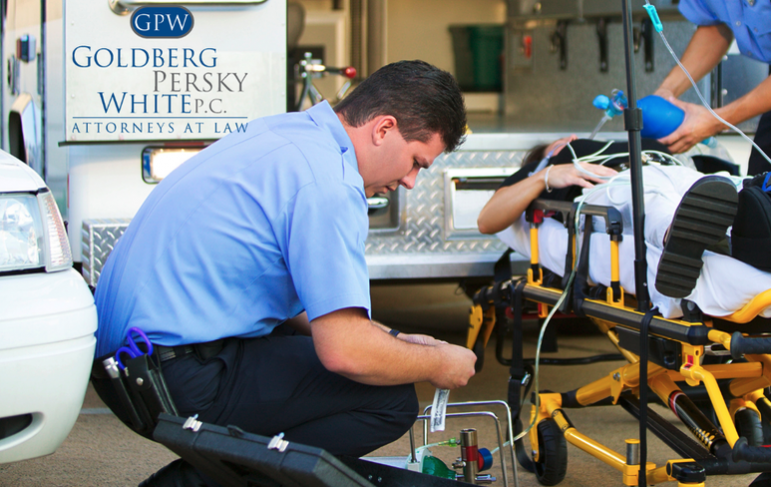Paramedics and Asbestos Exposure
First responders can encounter asbestos during rescue missions or disaster response efforts. Asbestos was used in construction materials produced before 1980. Although the use of asbestos has declined because of the discovery of its toxicity, the danger remains consistent as it is still found behind walls, under floors, in attics, and other hidden places. Exposure to asbestos can lead to various serious respiratory issues, including asbestosis, mesothelioma, and lung cancer.
Asbestos use was prevalent from the 1920s through the 1970s because of its high tensile strength, flexibility, chemical and thermal degradation resistance, and high electrical resistance. Asbestos was commonly used in buildings in:
- Boiler insulation
- Building siding
- Cooling towers
- Electrical wiring insulation
- Floor and ceiling tiles
- HVAC duct insulation
- Pipe insulation
- Spackling compounds
- Wallboard
Asbestos Released at the 9/11 World Trade Center Disaster
The EPA has classified asbestos as a known carcinogenic cancer-causing substance. Catastrophes and natural disasters may destroy buildings and cause the release of these fibers. As a result, first responders may be at risk of asbestos exposure. The cloud of asbestos and other substances that hovered over Manhattan after the 9/11 World Trade Center terrorist attacks continue to plague emergency responders. Carcinogens in the rubble and dust have led to thousands of cases of respiratory illnesses.
WTC responders were exposed on an acute short-term basis to an asbestos-containing mixture of particulate matter released by the collapsed towers and by rescue, recovery, and clean-up activities. Among the early responders who were exposed short-term during the hours to days after the collapse were:
- Firefighters
- Police
- Paramedics
- Construction workers
- Volunteers
How Is Asbestos transmitted to Paramedics and First Responders?
EMTs and paramedics render aid to people in an emergency, including rescue missions. When paramedics are deployed into situations where buildings are damaged or destroyed, they risk being exposed to asbestos and other dangerous materials.
Paramedics may also be exposed to asbestos in older hospitals that contain asbestos products. Boilers, pumps, HVAC equipment, and valves all contain asbestos, so if these materials were damaged when paramedics went in and out of hospitals, they could have inhaled in dangerous fibers.
Asbestos is not a severe threat when contained and well encapsulated. Still a building damaged by fire, an explosion, or aging will release microscopic asbestos fibers that can be unknowingly inhaled or ingested. Airborne asbestos can travel significant distances and remain in the air for an extended time. Loose fibers may stay on the skin, hair, clothing, and gear after exposure.
Asbestos exposure increases your risk of contracting lung disease. Three of the significant health effects associated with asbestos exposure are:
Lung Cancer is the leading cause of cancer deaths worldwide.
Mesothelioma is rare cancer affecting the mesothelium, a protective sac covering the body’s interior organs
Asbestosis is a serious progressive lung fibrosis, that creates scarring and inhibits breathing.
When asbestos is inhaled or ingested, the fibers may get trapped in the lungs or other bodily organs and remain there for years. Over time, these fibers burrow further into the soft organ tissue causing inflammation, scarring, and the formation of cancer cells.
Asbestos Exposure Compensation
Victims diagnosed with asbestos-related disorders may receive compensation from an asbestos trust fund, or directly from the company responsible for their illness or death, or workers’ compensation. Workers’ compensation benefits may be available to provide for medical care and partial wage replacement.
If you have a mesothelioma diagnosis or an asbestos-related disease, consult with GPW Law. We will help you file a claim or lawsuit. Our experienced attorneys will ensure that you receive the highest compensation for your injuries.
Sources:
“Who is at Risk of Exposure to Asbestos?” Agency for Toxic Substances and Disease Registry (2014) [Link]
“How EMTs Can Avoid Asbestos Exposures” EMS Web Info (2016) [Link]
“Asbestos” Healthcare Environmental Resource Center [Link]
Dixon Lloyd, McGovern Geoffrey, “Asbestos bankruptcy trusts and tort compensation” Institute for Civil Justice (2011) [Link]




